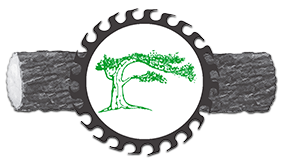Custom Wood Slabs
Wood slabs from Capital Sawmill are one of a kind.
We offer both unfinished and finished slabs for whatever project you’re working on
We can mill trees at your site or ours with our portable band sawmill. We can take down your trees and mill them or mill trees that have already been felled. For rates (locally, distant or out-of-state) please give us a call. Although we don’t stock dimensional lumber, we can custom cut logs into planks of many widths and lengths, suited to fit your project. We will cut Boards, Beams, Planks, Posts, Timbers, you name it! At our shop we have many woods available;
Wood Slabs up to 30″ Wide
Wood Types We Carry:
Which Wood Type is right for you?
Pine
Pine is an inexpensive, lightweight wood that can be yellowish or whitish with brown knots. It’s often used for rustic pieces, like farmhouse-style tables.
Pros: It’s low-cost, and it takes paint well, so it’s great for kids’ furniture. (The same holds true for birch and poplar.) Pine develops a nice, rustic patina from age and use, and it resists shrinking and swelling.
Cons: It’s a softwood, so it’s prone to scratches and dents.
Cherry
Cherry is a hardwood with a fine, straight grain that ranges from reddish brown to blond. It is often used for carved chairs but also shows up in clean-lined Shaker-style tables and cabinets.
Pros: It’s easily shaped, and it polishes well. Unstained, it has a rich, beautiful color.
Cons: It’s expensive. Sometimes the color darkens with age.
Maple
Maple is a creamy white hardwood that sometimes has a reddish tinge. One of the hardest wood species, maple is often chosen for heavy-use items, like dressers and kitchen cabinets.
Pros: Maple is affordable and ultra-durable. It can take a beating and look great for years. Because it takes dark stains well, maple is often stained to mimic a pricier wood, like cherry or mahogany (which is a controversial pick itself because of deforestation in the regions where it’s harvested).
Cons: If maple is not properly sealed first, the staining can look blotchy.
Oak
Oak is a hardwood that tends to be very grainy. There are two main varieties: red oak, which ranges from light brown to pinkish red with a swirling,
Pros: It is very durable and often cut in a way that makes it resistant to warping. Because of its visible wavy grain, it has a distinctive look. A clear finish nicely highlights the grain.
Cons: Stain can overly darken and exaggerate the grain, so it can end up looking two-toned.
Walnut
Walnut is a straight-grained hardwood that ranges from chocolate brown (when it’s from the center of the tree) to yellow (from the outer portion of the tree). A top pick for
Pros: It’s a very strong and stable wood that can take intricate carving. The color can be beautiful.
Cons: Some may not like the variation from dark to light that’s sometimes found on a single wide board. It’s also one of the more costly woods.
